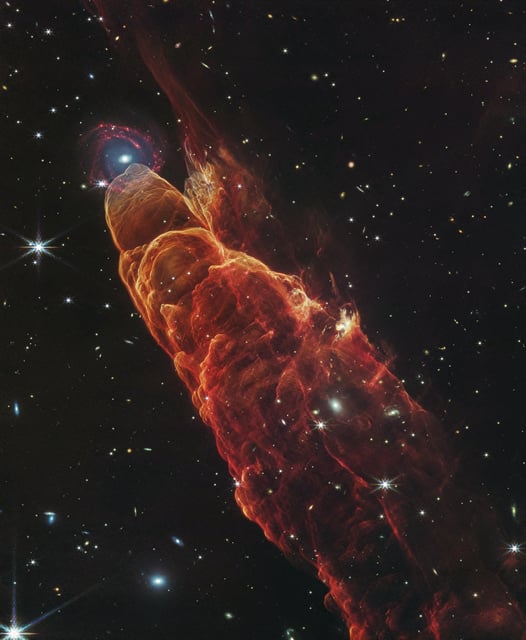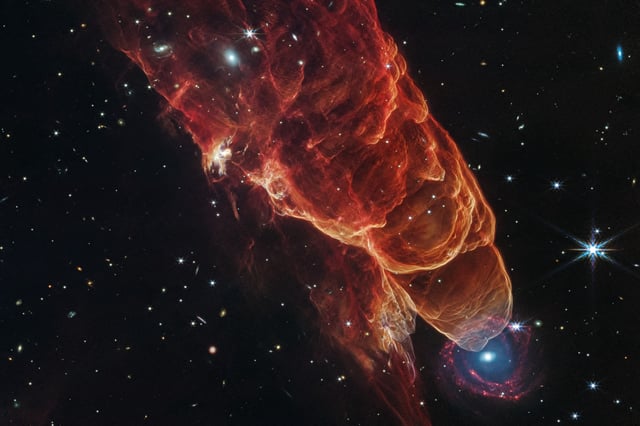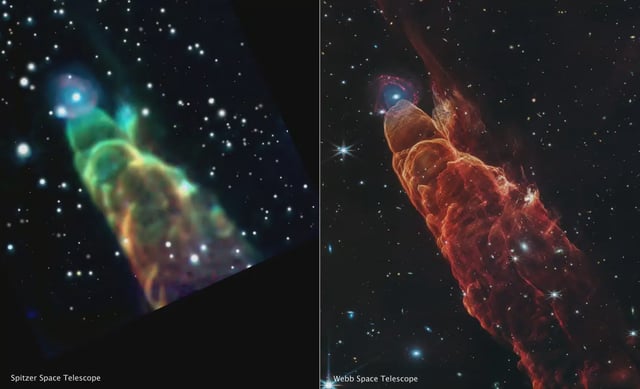Overview
- The James Webb Space Telescope has provided a high-resolution image of Herbig-Haro 49/50, a protostellar outflow located approximately 625-630 light-years away in the Chamaeleon constellation.
- Webb's imaging resolved the fuzzy object at the tip of the outflow, first observed by Spitzer in 2006, as a distant face-on barred spiral galaxy with regions of forming stars and warm dust.
- The image reveals intricate details of the outflow, including glowing hydrogen and carbon monoxide molecules, as well as energized dust grains, advancing studies of star formation and jet activity.
- Scientists suspect the protostar Cederblad 110 IRS4, located about 1.5 light-years from HH 49/50, is the source of the jet creating the outflow.
- The Chamaeleon I Cloud complex, where HH 49/50 is located, is one of the Milky Way's closest star-forming regions and offers insights into environments similar to the Sun's formation.


